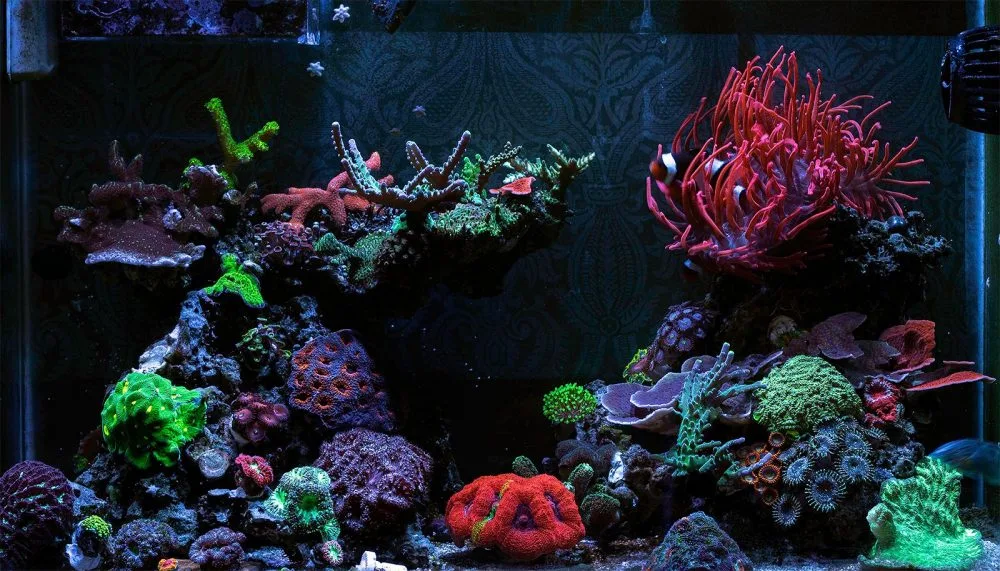Stunning 20-Gallon Reef Tank – jservedio's TOTM | NanoReef

Tank Specifications
Volume: 20 Gallons / 75 Liters
Dimensions (L × W × H):
24.0" ×
12.0" ×
17.0"
61.0cm ×
30.5cm ×
43.2cm
Equipment List
- Salt: NIL
Frequently Asked Questions
How do you maintain water parameters in a nano reef tank?
To maintain stable water parameters, routinely test your water for alkalinity, nitrates, and phosphates. Make regular water changes (at least 5 gallons per month) using high-quality salt mix. Utilize a reliable RODI (Reverse Osmosis Deionization) unit for water changes and top-offs. Stability is essential for coral health.
What is the recommended feeding schedule for a nano reef tank?
Feed your fish a pinch of NLS pellets twice a day and offer frozen PE Mysis every couple of weeks for anemones and corals. Regular feeding helps maintain nutrient levels, which is vital for coral growth.
What is your cleaning routine and schedule?
Perform weekly tasks like cleaning the glass, blowing detritus off rocks and corals, and testing alkalinity. Monthly, do a 5-gallon water change, but adjust the timing based on your observations and conditions.
What equipment is essential for maintaining a nano reef tank?
Key equipment includes a reliable heater (like a Fluval 100w), good lighting (such as LED lights), water circulation pumps, a RODI unit, and an ATO (automatic top-off) system to maintain water levels. Additionally, consider a sump for improved filtration and water volume.
How do you choose and place corals in your reef tank?
Choose corals based on their light and flow requirements, compatibility, and growth patterns. Place them carefully to give enough space for growth and to prevent aggressive behavior. Monitor their interactions as corals can compete for space and resources over time.
What should I do if my corals are fighting?
If corals are fighting, assess the situation and try to re-position them for better spacing. If necessary, you may have to move the more aggressive coral or use physical barriers to prevent them from encroaching on each other.
How do you control pests and diseases in your reef tank?
Implement a strict quarantine procedure for new corals and livestock. Regularly inspect your tank for signs of pests. Use dips for corals and maintain nutrient levels to prevent outbreaks of issues like Dinoflagellates.
What lighting setup do you recommend for a nano reef?
LED lighting is preferred due to its efficiency and effectiveness. A Radion XR30 Pro with wide-angle lenses offers flexibility. Aim for moderate light levels to support coral health and color development while preventing light burn.
How much water flow is necessary in a nano reef tank?
Higher flow is generally better, but avoid pointing powerheads directly at the corals. Aim for a variety of flow patterns that create turbulence and allows nutrients to circulate without stressing corals.